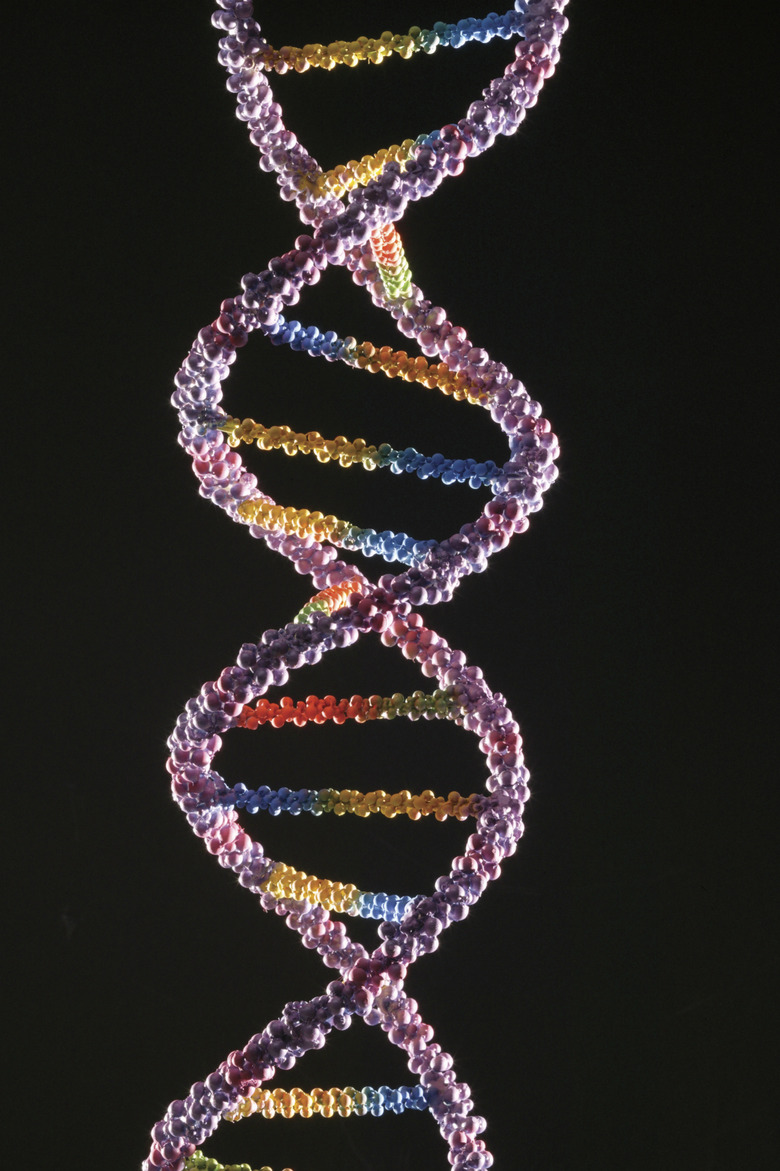What Is Used To Cut DNA At A Specific Location For Splicing?
Scientists need to manipulate DNA in order to identify genes, study and understand how cells work and produce proteins that have medical or commercial importance. Among the most important tools for manipulating DNA are restriction enzymes — enzymes that cut DNA at specific locations. By incubating DNA together with restriction enzymes, scientists can cut it into pieces that can later be "spliced" together with other DNA segments.
Origins
Origins
Restriction enzymes are found in bacteria, which use them as a weapon against bacteriophage, viruses that infect bacteria. When the viral DNA makes its way into the cell, the restriction enzymes chop it up into pieces. These bacteria typically also have other enzymes that make chemical modifications to specific sites on their DNA; these modifications protect the bacterial DNA from getting chopped up by the restriction enzyme.
Restriction enzymes are generally named after the bacterium from which they were isolated. HindII and HindIII, for example, are from a species called Haemophilus influenzae.
Recognition Sequences
Recognition Sequences
Each restriction enzyme has a highly specific shape, so it can only stick to certain sequences of letters in the DNA code. If its "recognition sequence" is present, it will be able to stick to the DNA and make a cut at that point. The restriction enzyme Sac I, for instance, has the recognition sequence GAGCTC, so it will make a cut anywhere this sequence appears. If that sequence appears in dozens of different places in the genome, it will make a cut in dozens of different places.
Specificity
Specificity
Some recognition sequences are more specific than others. The enzyme HinfI, for example, will make a cut in any sequence that starts with GA and ends with TC and has one other letter in the middle. Sac I, by contrast, will only cut the sequence GAGCTC.
DNA is double-stranded. Some restriction enzymes make a straight cut that leaves two double-stranded pieces of DNA with blunt ends. Other enzymes make "slanted" cuts that leave each piece of DNA with a short single-stranded end.
Splicing
Splicing
If you take two pieces of DNA with matching sticky ends and incubate them with another enzyme called ligase, you can fuse or splice them together. This technique is very important for molecular biologists because they often need to take DNA and insert it into bacteria to make proteins like insulin that have medical uses. If they cut the DNA from a sample and a piece of bacterial DNA with the same restriction enzyme, both the bacterial DNA and the sample DNA will now have matching sticky ends, and the biologist can use ligase to splice them together.
References
- Molecular Cell Biology 2008; Harvey Lodish, et al.
Cite This Article
MLA
Brennan, John. "What Is Used To Cut DNA At A Specific Location For Splicing?" sciencing.com, https://www.sciencing.com/used-cut-dna-specific-location-splicing-2422/. 24 April 2017.
APA
Brennan, John. (2017, April 24). What Is Used To Cut DNA At A Specific Location For Splicing?. sciencing.com. Retrieved from https://www.sciencing.com/used-cut-dna-specific-location-splicing-2422/
Chicago
Brennan, John. What Is Used To Cut DNA At A Specific Location For Splicing? last modified March 24, 2022. https://www.sciencing.com/used-cut-dna-specific-location-splicing-2422/
